Definition Of Bear And İts Characteristics
Bears are fascinating animals that have captured the attention and admiration of humans for centuries. These majestic creatures are known for their powerful build, shaggy fur, and intimidating presence. But what exactly is a bear and what are some of its defining characteristics?
A bear is a large carnivorous mammal that belongs to the Ursidae family. They have a distinctive, bulky body shape with short legs and a large head. One of the most recognizable features of a bear is its fur, which can come in a variety of colors, including black, brown, white, and even blue. Bears are also known for their sharp claws, which they use for digging, climbing, and catching prey.
- Bears are omnivores, meaning they eat both meat and plants. Their diet can include berries, nuts, fish, insects, and small mammals.
- Bears are found in many parts of the world, including North America, South America, Europe, and Asia.
- There are eight species of bears in the world, each with their own unique characteristics and adaptations.
One of the most impressive features of bears is their strength. They are able to lift and carry objects that are several times their own weight, making them some of the strongest animals in the world. Additionally, bears are excellent swimmers and can swim long distances without getting tired.
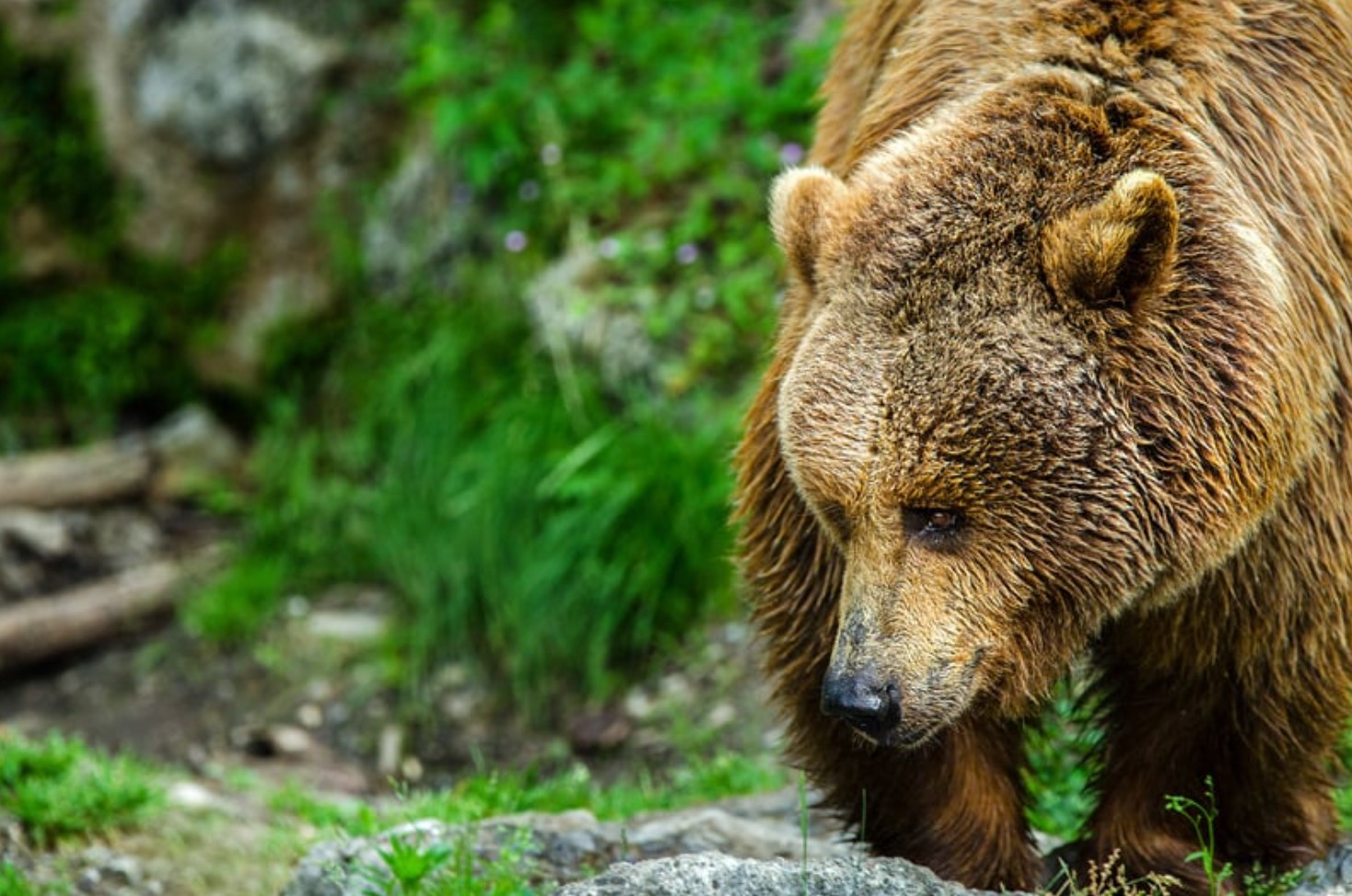
Another defining characteristic of bears is their behavior. They are typically solitary animals, although some species, like the North American grizzly bear, can be quite social. Bears are also known for their hibernation habits, which help them conserve energy during the winter months. During hibernation, a bear’s heart rate and body temperature drop significantly, allowing it to sleep for long periods of time without needing to eat or drink.
| Bear | Size Range | Range | Diet | Notable Feature |
|---|---|---|---|---|
| Brown Bear | 5-9 ft; 220-1500 lbs | North America, Europe, Asia | Omnivorous | Largest terrestrial carnivore in the world |
| Polar Bear | 7-9 ft; 900-1500 lbs | Arctic Circle | Carnivorous | Adapted to living in harsh Arctic conditions |
| Spectacled Bear | 4-6 ft; 220-440 lbs | South America | Omnivorous | Only bear native to South America |
| Asiatic Black Bear | 4-6 ft; 110-440 lbs | Asia | Omnivorous | Known for their distinctive, V-shaped mark on their chest |
| Sun Bear | 3-4 ft; 60-130 lbs | Southeast Asia | Omnivorous | Smallest bear in the world |
| American Black Bear | 4-7 ft; 110-660 lbs | North America | Omnivorous | Most common bear species in North America |
| Grizzly Bear | 5-8 ft; 400-1000 lbs | North America | Omnivorous | Symbol of the American West |
| Panda Bear | 4-6 ft; 200-330 lbs | China | Herbivorous | A national treasure of China |
In conclusion, bears are remarkable creatures that continue to captivate people around the world. Their distinctive features, behaviors, and adaptations make them fascinating to study and admire. Whether you’re fascinated by the majestic brown bear or the adorable panda, there’s no denying the awe-inspiring power and beauty of these incredible animals.
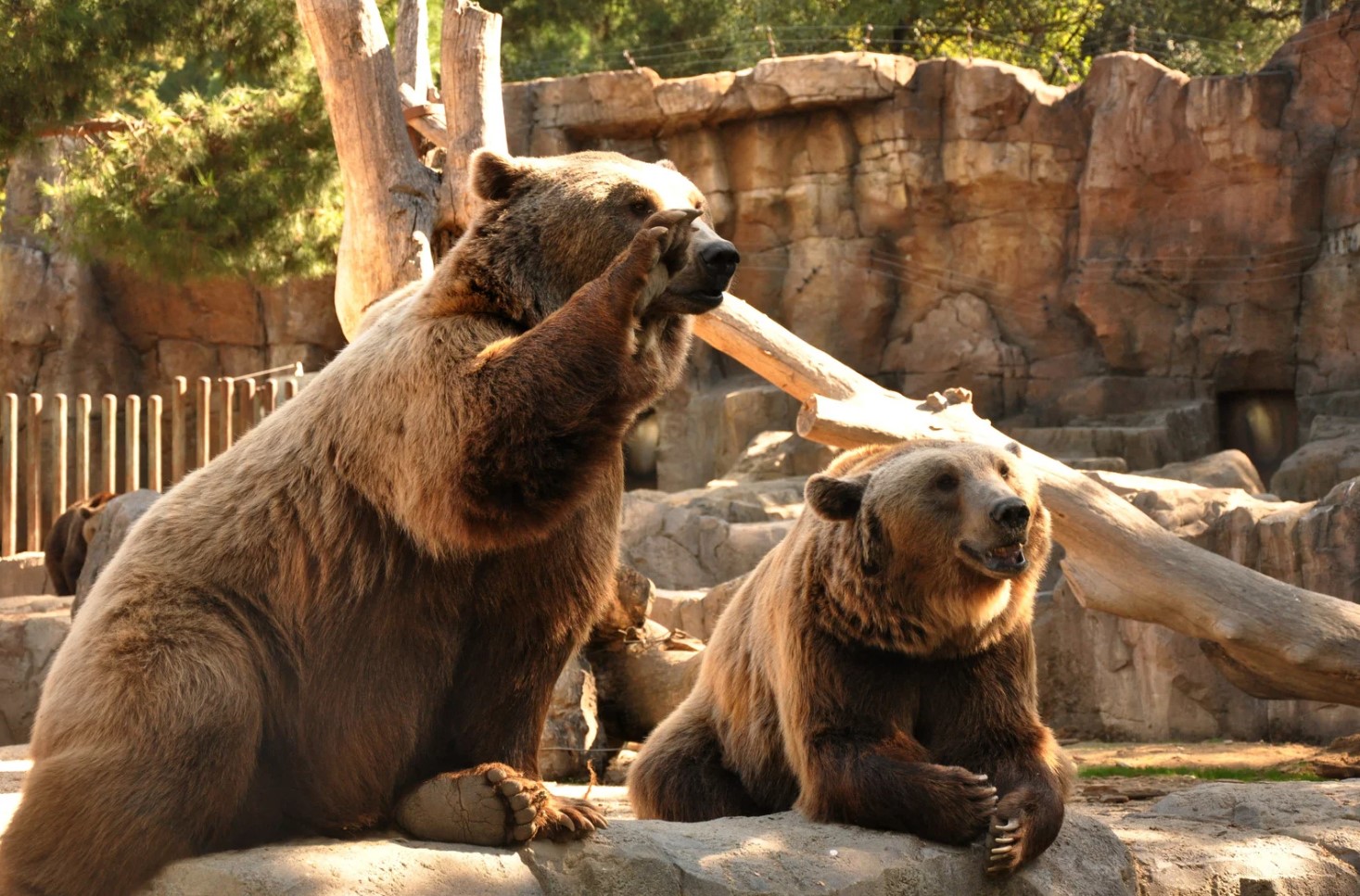
Classification Of Bear Species
Bears have long captured the fascination of human beings owing to their large size and the fact that they are apex predators in their respective ecosystems. They are considered to be intelligent, social animals that are capable of complex interactions with their environment and with other members of their species. However, there is much to learn about them, especially in terms of their classification and species variety.
There are eight known species of bears: the American black bear, Asiatic black bear, brown bear, giant panda, polar bear, spectacled bear, sun bear, and sloth bear. Each of these species has its own unique characteristics, such as size, location, and diet. American black bears, found in North America, are the smallest species while the polar bear, found in the Arctic, is the largest carnivorous mammal on Earth. The sloth bear, found in India and Sri Lanka, is known for its long, shaggy coat and its love for termites.
- The American black bear
- The Asiatic black bear
- The brown bear
- The giant panda
- The polar bear
- The spectacled bear
- The sun bear
- The sloth bear
The brown bear is the most widespread and numerous species in the world. It is found across Asia, Europe, and North America, and its subspecies include the grizzly bear in North America and the Kodiak bear in Alaska. Meanwhile, the giant panda, native to China, is known for its distinct black-and-white fur and is often used as a symbol of conservation efforts. The polar bear, found in the Arctic, is considered to be at the top of the food chain and is threatened by climate change, which is rapidly melting its habitat.
| Bear Species | Size | Location | Diet |
|---|---|---|---|
| American Black Bear | 5-6 feet long, 200-600 pounds | North America | Omnivorous, eats berries, nuts, fish, and small mammals |
| Sun Bear | 4-5 feet long, 60-150 pounds | Southeast Asia | Omnivorous, eats insects, small mammals, and fruits |
| Spectacled Bear | 5-6 feet long, 120-340 pounds | South America | Omnivorous, eats plants, fruits, and small mammals |
Despite their sheer size and strength, bears are vulnerable to habitat loss and hunting, and many species are now considered threatened or endangered. Conservation efforts seek to restore bear populations to their natural habitats and preserve these majestic creatures for future generations to appreciate and study.
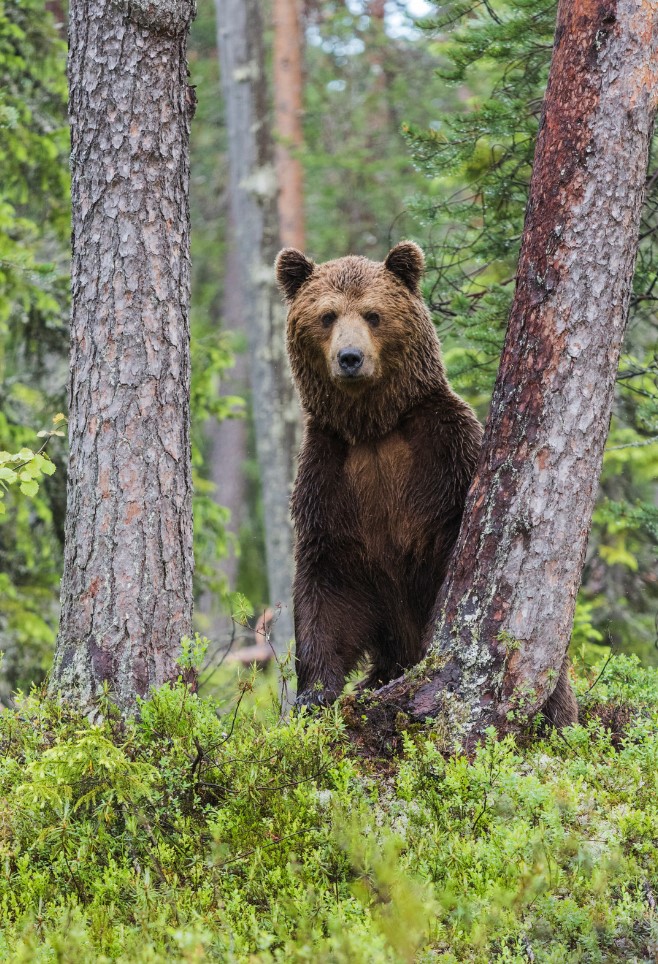
Brown Bear: The Largest Carnivorous Mammal On Earth
The Brown Bear is a fascinating creature and is known to be the largest carnivorous mammal on earth. They are also called grizzly bears due to their brownish fur with white tips on their back and shoulders which gives them a grizzled look.
Brown Bears are found across North America, Europe, and Asia, in a variety of habitats such as forests, grasslands, and tundra. They are known to be apex predators and can weigh up to 1,500 pounds. They have sharp claws and strong jaws which they use to catch their prey.
Characteristics of Brown Bears
- Their diet consists of both plants and animals;
- They have a keen sense of smell and good eyesight;
- They are proficient swimmers;
- They can hibernate for several months.
Brown Bears play an important role in their ecosystem by controlling the population of herbivores, which in turn helps maintain a healthy habitat for other animals. However, like many other species, Brown Bears are facing several threats such as habitat destruction, hunting, and climate change.
| Threats faced by Brown Bears | Conservation efforts |
|---|---|
| Loss of habitat due to human activities such as deforestation and mining | Establishing protected areas and wildlife corridors |
| Poaching and illegal hunting | Enforcing wildlife protection laws and promoting sustainable tourism |
| Climate change causing a loss of food sources and habitat fragmentation | Research and monitoring to understand the impacts of climate change and promoting sustainable living practices |
If we do not take adequate measures to protect these magnificent creatures, we may lose them forever. It is our responsibility to ensure their survival and maintain a healthy balance in our ecosystems.
Polar Bear: The Apex Predator Of The Arctic
The Polar Bear, also known as Ursus maritimus, is the largest meat-eating bear species and is considered the apex predator of the Arctic. Known for their magnificent white fur, they are amongst the most recognizable animals in the world. In this blog, we shall explore the characteristics, behavior, and conservation status of the mighty Polar Bear – the true ruler of the Arctic.
Unlike other species of bears, Polar Bears are a marine mammal, spending most of their life on floating sea ice. Their thick fur and fat layer provide insulation and warmth, making them able to survive in some of the coldest and harshest environments in the world. They can weigh up to 1500 pounds or more and can grow up to 10 feet in length – making them true giants of the animal world.
- They rely on sea ice to survive and hunt their prey, which consists mainly of ringed and bearded seals.
- They can swim up to 60 miles without taking a break and have been spotted as far as 200 miles from the nearest landmass.
- Despite their size, Polar Bears are excellent swimmers, using their huge paws to paddle effectively in the water.
As the Arctic sea ice melts due to climate change, Polar Bears are finding it harder to find food, leading to a decline in their population. They are classified as a vulnerable species by the International Union for Conservation of Nature (IUCN), with their population estimated to decrease by 30% over the next few decades.
| Kingdom | Animalia |
|---|---|
| Phylum | Chordata |
| Class | Mammalia |
| Order | Carnivora |
| Family | Ursidae |
| Genus | Ursus |
| Species | Ursus maritimus |
In conclusion, the Polar Bear is a magnificent and impressive creature that is truly the king of the Arctic. With their mass, strength, and intelligence, the Polar Bear is revered in many cultures and considered one of the most dangerous predators in the world. However, as climate change continues to impact their habitat, conservation efforts are necessary to ensure the survival of this iconic species for future generations.
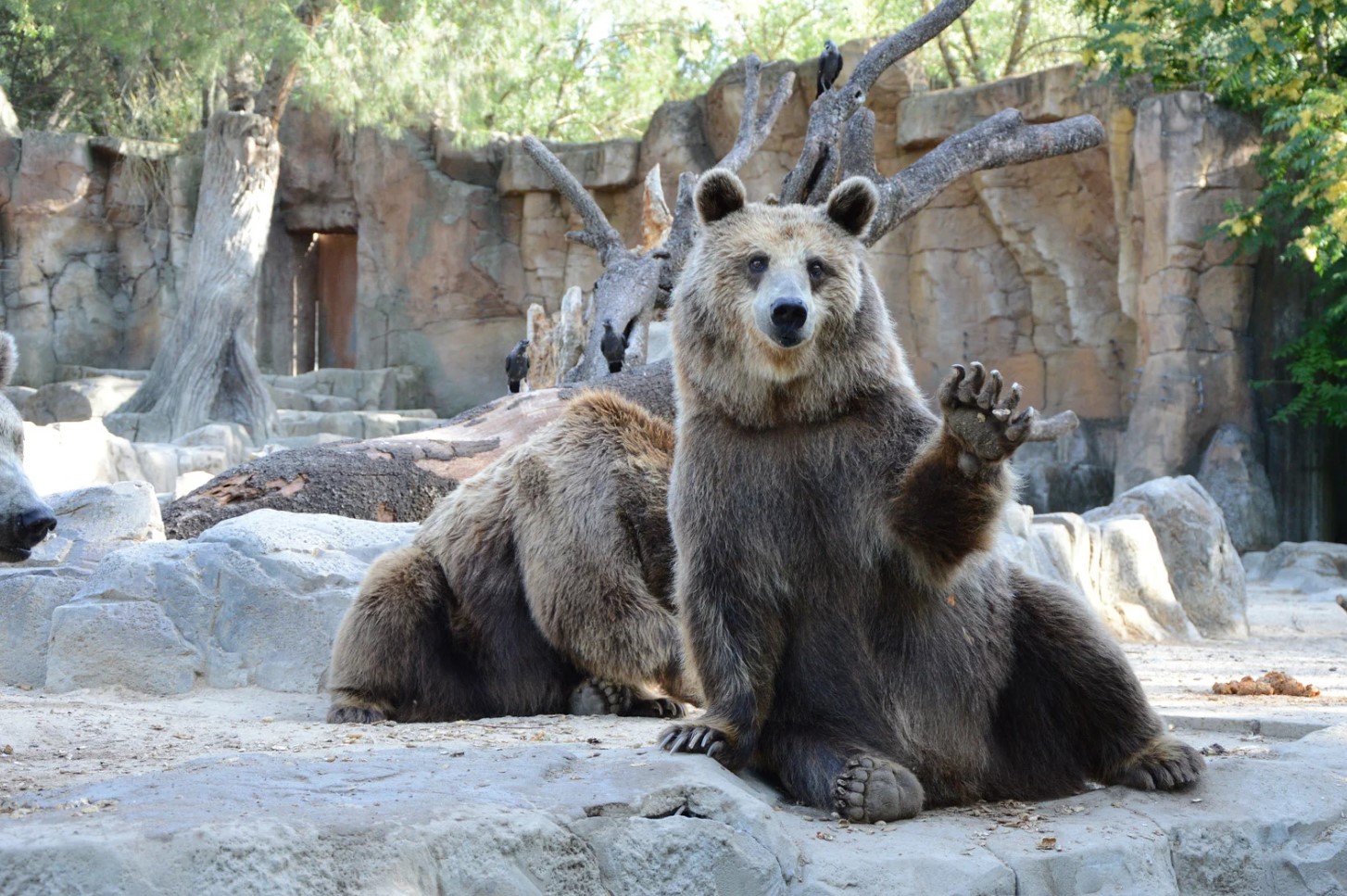
Spectacled Bear: The Only Bear Native To South America
The spectacled bear, also known as the Andean bear or the Andean short-faced bear, is the only species of bear that is native to South America. Despite being the smallest species of bear in South America, they are still the largest land animal in their range, which spans the Andean region from Venezuela to Bolivia.
One of the most notable physical characteristics of the spectacled bear is the light-colored markings around their eyes that resemble glasses or spectacles. These markings can be different shapes and sizes, ranging from a thin line to almost complete circles. The rest of their fur can come in a variety of colors, including shades of brown, black, and even reddish-gold.
The spectacled bear is a primarily herbivorous animal, meaning that their diet mostly consists of vegetation. They feed on a broad range of plants, including fruits, berries, and leaves. However, they may also occasionally eat small animals like rodents or insects, primarily if they encounter them while searching for plant matter.
- Their habitat ranges from dry scrub forest to the high Andean cloud forest at elevations of 3,000 to 4,500 meters.
- Spectacled bears are known to be solitary animals, only coming together for mating, though mothers will stay with their cubs until they are mature enough to be independent.
- Conservation efforts are underway for the spectacled bear, including protected reserves and education efforts to mitigate human-bear conflict.
| Scientific Name: | Tremarctos ornatus |
|---|---|
| Height: | Standing at the shoulder, males are about 60-76 cm (24-30 inches) and females are about 50-70 cm (20-28 inches) tall. |
| Weight: | Adult male spectacled bears typically weigh between 100 and 200 lbs, while females weigh between 70 and 150 lbs. |
| Population: | The International Union for Conservation of Nature (IUCN) estimates that there are fewer than 10,000 spectacled bears left in the wild, and their population numbers are decreasing. |
Overall, the spectacled bear is a fascinating and unique animal that is essential to the South American ecosystem. With the right conservation efforts and education, we can help to protect and preserve this remarkable species for generations to come.
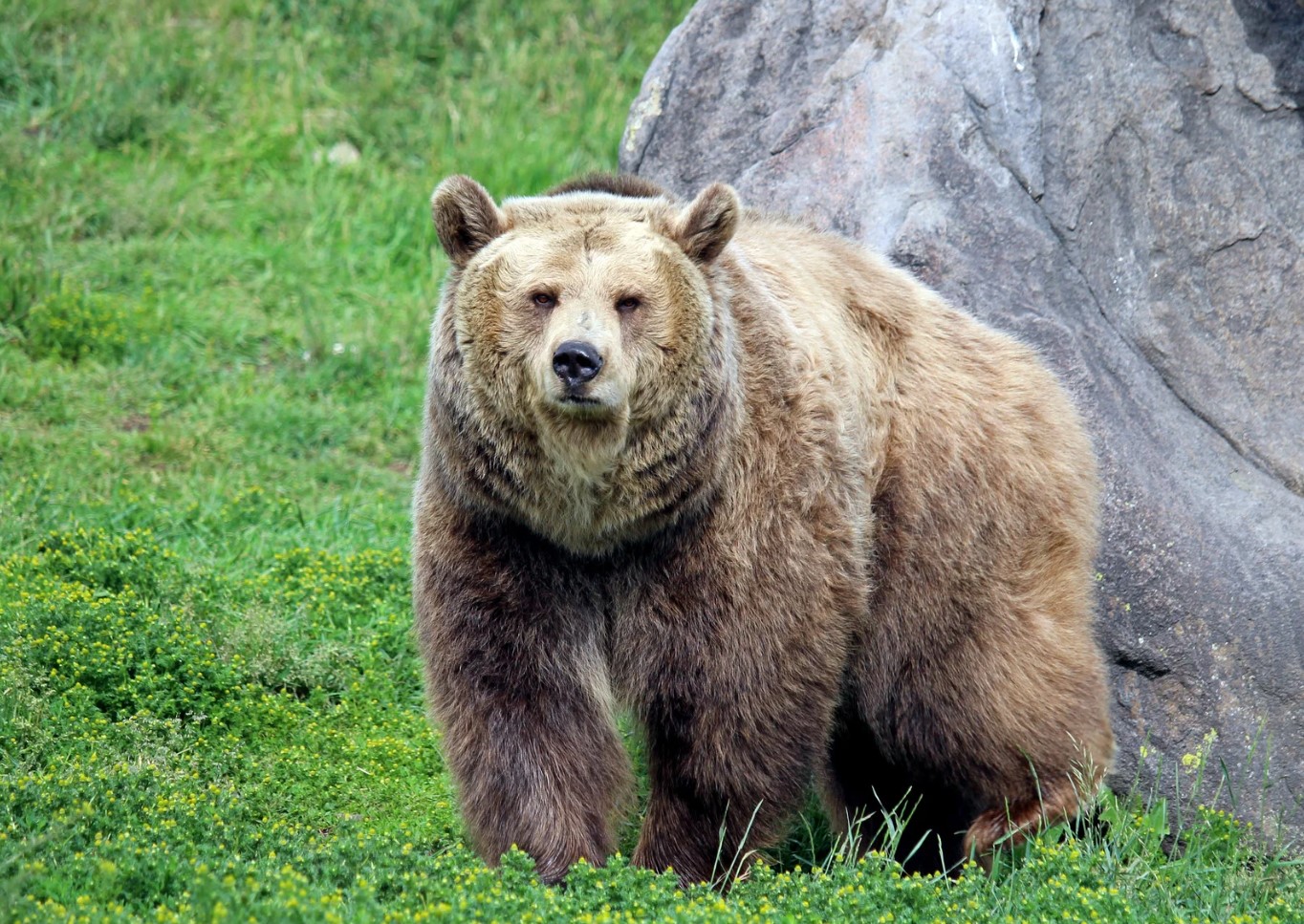
Asiatic Black Bear: An Endangered Species İn Asia
The Asiatic Black Bear, also known as the moon bear or white-chested bear, is one of the eight bear species that exist in the world. These bears are found in various parts of Asia, from Iran to Japan. However, due to various reasons, they are currently classified as an endangered species.
One of the main reasons for their endangered status is habitat loss. The forests where these bears live have been destroyed due to deforestation, mining, and urbanization. This loss of habitat has resulted in a decrease in the number of bears, as they have nowhere to live and hunt for food. Moreover, these bears are also hunted for their body parts, which are valued for their medicinal properties in various parts of Asia.
- Another major factor contributing to the decline in the population of Asiatic black bears is climate change. Due to global warming, the forests where they live have become warmer and drier, making it harder for them to find food and water. As a result, they are forced to venture into human settlements in search of sustenance.
- The efforts to conserve Asiatic black bears are ongoing, with many organizations working to protect their habitats, ban hunting, and promote public awareness. One such organization is the Asian Black Bear Research and Conservation Center, which works to protect and monitor the bears and their habitats.
- If these conservation efforts are successful, it could mean a brighter future for Asiatic black bears in Asia. The bears will be able to live and thrive in their natural habitats, and we will be able to see them in the wild for generations to come.
In conclusion, Asiatic black bears are one of the most endangered species in Asia, due largely to habitat loss and hunting. However, with the continued efforts of conservation organizations and public awareness, there is hope for the future of these magnificent creatures.
Sun Bear: The World’s Smallest Bear
Sun bears are the world’s smallest species of bear, and they are also one of the rarest. These bears, which are also called honey bears, belong to Southeast Asia and are primarily found in countries such as Malaysia, Indonesia, and Thailand.
This species has a unique appearance, marked by its small size, sleek black fur, and a distinctive golden patch on its chest. As omnivores, sun bears eat fruits, insects, small mammals, and even honey. Their strong sense of smell helps them find food in the dense forests that they call home.
- Sun bears have a very flexible tongue
- They have curved and sharp claws
- Honey bears’ teeth are strong
Sun bears have faced severe threats due to habitat loss, hunting, and illegal wildlife trade over the years. The population of these bears has been rapidly declining, making them vulnerable to extinction. The International Union for Conservation of Nature (IUCN) has listed this species as vulnerable, and urgent conservation efforts are required to protect them.
| Common Name | Sun Bear |
|---|---|
| Scientific Name | Helarctos malayanus |
| Weight | Up to 145 lbs (66 kg) |
| Length | 4-5 feet (1.2-1.5 m) |
| Habitat | Tropical forest |
| IUCN Status | Vulnerable |
Conservation organizations and governments are working together to create and implement action plans to protect sun bears and conserve their habitats. Raising awareness about the importance of the conservation of species such as the sun bear is crucial, and it is everyone’s responsibility to contribute to its protection.
By learning about sun bears and their role in our ecosystems, we can develop an appreciation for these fascinating and unique creatures. It is essential to collaborate and take action to secure their future and ensure that they continue to exist in the wild.
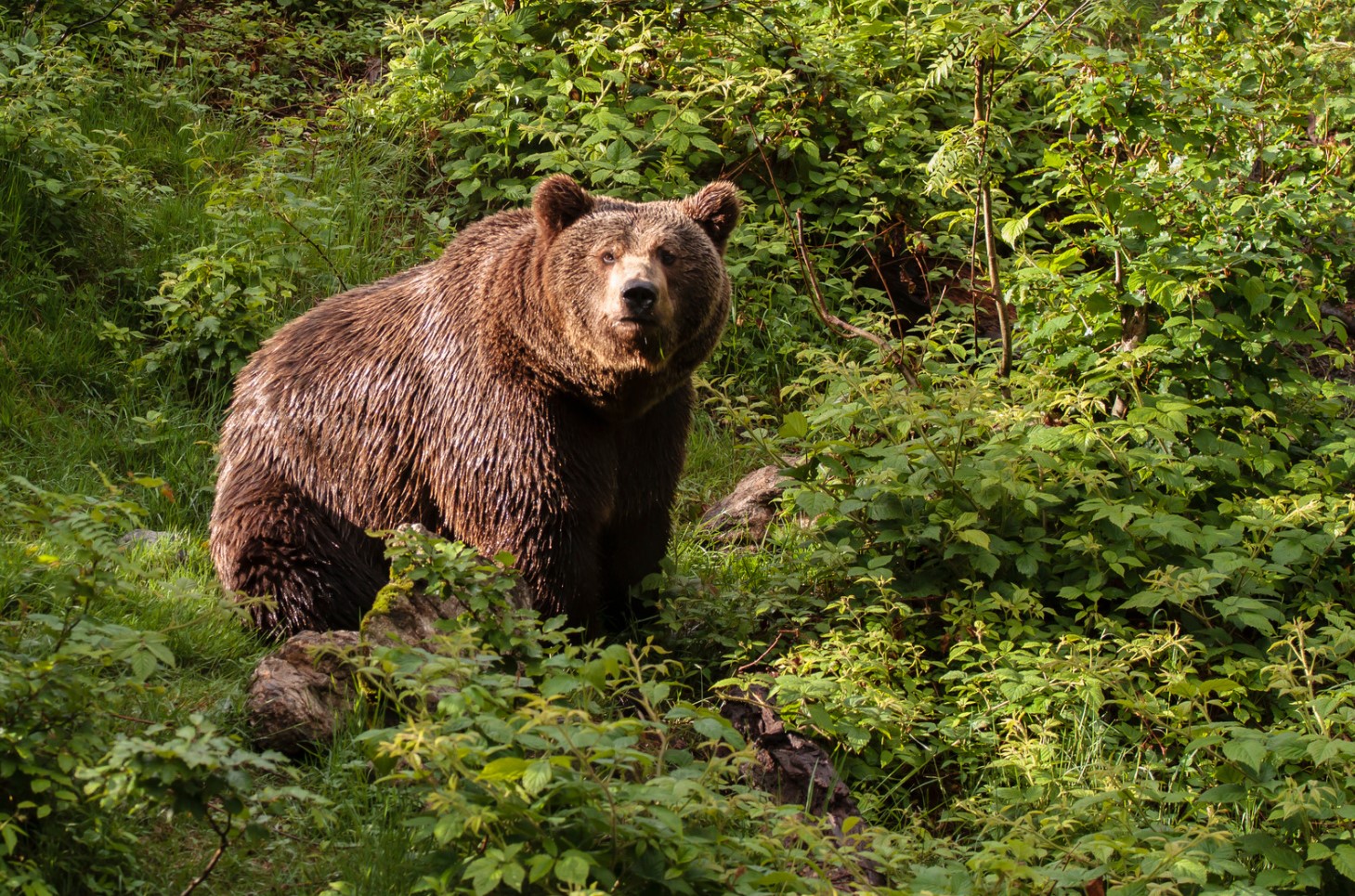
American Black Bear: The Most Common Species İn North America
The American black bear (Ursus americanus) is the most abundant and widely distributed bear species in North America. They are found in forests, swamps, meadows, and even urban areas, primarily in the United States, but also in parts of Canada and Mexico. These bears have a rich history and are deeply intertwined with American culture and history. Here are some facts about the American black bear and their behavior.
- Size and Appearance: American black bears are typically smaller than other bear species, with an average adult male weighing between 130 and 500 pounds, while females weigh between 90 and 300 pounds. Adult males can reach 6 feet in length, and females reach up to 5 feet. They have a stocky build, a short tail, and shaggy black fur, with occasional variations in color, such as brown, blonde, or cinnamon.
- Behavior: Black bears are primarily nocturnal, but they can be active during the day. They are also opportunistic omnivores and have a varied diet that includes fruits, nuts, berries, insects, and small mammals. They are known to be excellent climbers and can run at speeds of up to 25 miles per hour. They are also known to be curious animals and may approach humans if they sense no threat. However, their behavior can also be unpredictable and dangerous, especially if they feel threatened or cornered.
- Conservation: The American black bear population is considered stable, but there are still threats to their survival, such as habitat loss, hunting, and conflicts with humans. A significant number of bears are killed each year due to collisions with vehicles or hunting. Some states have implemented conservation measures, such as regulated hunting, education campaigns, and habitat restoration efforts. However, there is much more work to be done to ensure the long-term survival of American black bears.
| Interesting Facts About American Black Bears |
|---|
| Black bears have a keen sense of smell and can detect scents from up to a mile away. |
| Their scientific name, Ursus americanus, means “American bear.” |
| Black bears have been known to hibernate for up to 7 months in a year. |
American black bears have captured the imagination and fascination of people for centuries. They have played a vital role in American culture, featuring prominently in Native American folklore and being the state animal of several states, including New Jersey and West Virginia. Despite their abundance and close proximity to humans, there is still much to learn about these remarkable animals, and it is essential to continue efforts to protect their habitat and promote coexistence with humans.
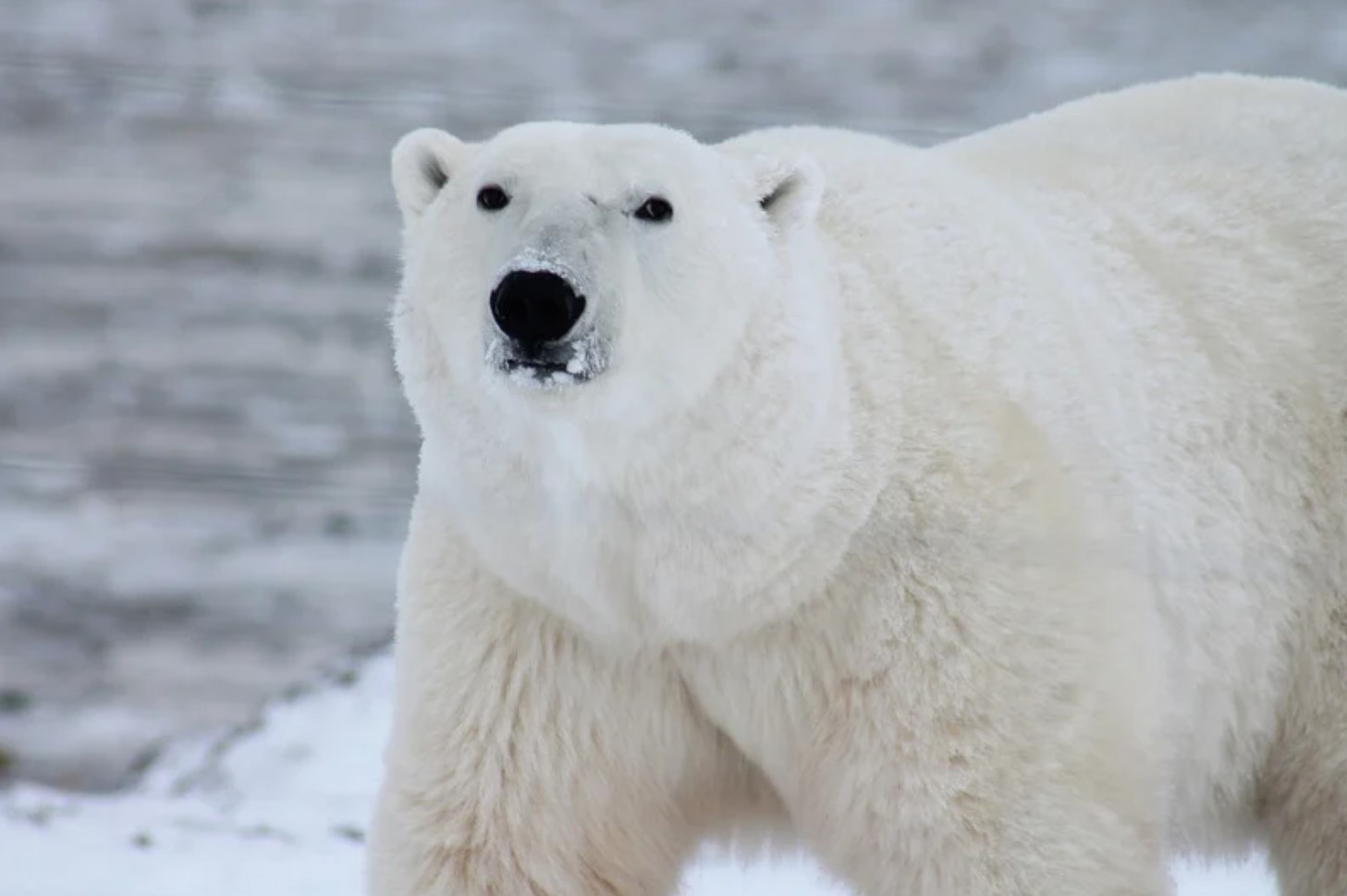
Grizzly Bear: An Iconic Symbol Of The American Wild West
The Grizzly Bear is a well-known symbol of the American Wild West. These majestic creatures are one of the largest land mammals found in North America, and have been a part of the region’s history for centuries. They are known for their size, strength, and fearsome presence, and have been the subject of much folklore and legend in the region.
The Grizzly Bear, whose scientific name is Ursus arctos horribilis, is a subspecies of the Brown Bear. They are found primarily in the western United States and Canada, with smaller populations in Alaska and Mexico. Grizzly Bears are known for their large size, with males sometimes weighing up to 600 pounds or more. They have thick fur that ranges in color from light brown to almost black, and are known for their distinctive hump on their shoulders, which is made of muscle and helps them to dig for food.
- Grizzly Bears are omnivores, and their diet is varied. They eat everything from grasses and berries, to fish, small mammals, and carrion.
- Grizzly Bears are solitary animals, and males are particularly territorial. They are known for their aggressive behavior, and will defend their territory and food sources fiercely.
- Grizzly Bears are an important part of the ecosystem in which they live. They help to control populations of other animals, and their digging and foraging activities help to spread seeds and nutrient-rich soil.
However, Grizzly Bears are also under threat. Human activities, such as hunting and habitat destruction, have pushed them to the brink of extinction in some places. Conservation efforts are underway to protect these magnificent creatures, but there is still much work to be done. As iconic symbols of the American Wild West, Grizzly Bears are a part of our cultural heritage, and it is our responsibility to ensure their survival for generations to come.
| Characteristics Of Grizzly Bears | Description |
|---|---|
| Size and Weight | Can range from 200 to 600 pounds for males, and 200 to 400 pounds for females. |
| Color | Ranges from light brown to almost black |
| Diet | Varied diet that includes grasses, berries, fish, small mammals, and carrion. |
| Behavior | Aggressive when defending territory and food sources. |
| Habitat | Primarily found in the western United States and Canada, with smaller populations in Alaska and Mexico. |
Grizzly Bears are an important part of the American Wild West, and have long been a symbol of the region’s rugged and untamed wilderness. With conservation efforts, we can ensure that these magnificent creatures continue to thrive in the years to come.
Panda Bear: A National Treasure Of China
The giant panda, also known as just the panda bear, is one of the most recognizable animals in the world. Native to China, this mammal has captured the hearts of people around the globe with its distinctive black and white fur and playful personality. As China’s national treasure, the panda holds a special place in the country’s culture and history, and has become an important symbol of conservation efforts worldwide.
Despite its popularity, the panda is an endangered species, with less than 2,000 individuals remaining in the wild. The main threat to the panda’s survival is habitat loss, as deforestation and human development continue to encroach on its natural habitat. In addition, pandas have a low reproductive rate, with females typically giving birth to just one cub every two to three years.
- There are several conservation programs in place to help protect the panda and its habitat, including the creation of nature reserves and reforestation efforts.
- In Chinese culture, the panda is seen as a symbol of peace, good luck, and friendship.
- Pandas are also a popular attraction for tourists visiting China, with many zoos and wildlife parks offering opportunities to see the bears up close.
| Physical Characteristics | Behavioral Characteristics |
|---|---|
|
|
As China’s national treasure and one of the world’s most beloved animals, the panda is a unique and important species. Through conservation efforts and support from the global community, we can work to protect these amazing creatures and ensure their survival for generations to come.
Evolution Of Bears: From Early Ancestors To Modern Species
The bear is a fascinating creature that has undergone many changes over the course of its existence. The evolution of bears has been a long and complex process, starting with early ancestors and leading to the modern species we see today. Let’s take a closer look at the different stages of bear evolution, from the beginning of time to the present day.
Early Ancestors: The oldest known ancestor of modern bears lived about 25 million years ago. This ancient bear, sometimes called the “dawn bear,” was small and had long, slender legs. Over time, bears began to evolve and grow larger, developing unique characteristics specific to their environment.
- Arctotherium: One of the largest bears to ever exist was the Arctotherium, which lived in South America during the Pleistocene epoch. This ancient bear weighed up to 3,500 pounds and stood 11 feet tall.
- Ursus maritimus tyrannus: The Ursus maritimus tyrannus, also known as the “polar bear-dog,” was a giant bear that lived during the Pleistocene epoch. This animal resembled both a bear and a dog and weighed up to 2,200 pounds.
Modern Species: Today, bears are found all over the world and are classified into eight different species. These include the brown bear, polar bear, sun bear, Asiatic black bear, American black bear, spectacled bear, sloth bear, and panda bear.
| Bear Species | Location | Notable Characteristics |
|---|---|---|
| Brown bear | North America, Europe, Asia | Largest carnivorous mammal on land |
| Polar bear | Arctic | Apex predator of the Arctic |
| Sun bear | Southeast Asia | Smallest bear species |
| Asiatic black bear | Asia | Endangered species |
| American black bear | North America | Most common bear species in North America |
| Spectacled bear | South America | Only bear species native to South America |
| Sloth bear | India, Sri Lanka | Long snout for eating insects |
| Panda bear | China | National treasure of China |
From the dawn bear to the modern day species, the evolution of bears has been a testament to survival and adaptation. With ongoing efforts in conservation and education, we can ensure the future of bears for generations to come.
Bear Mythology And Folklore İn Different Cultures
Bears are majestic creatures that have been a part of different cultures and mythologies for centuries. They have always been looked upon with a mix of awe and fear since early civilizations first came into contact with them. Because bears are found all over the world, they have become a part of many different cultures, each with its own mythology and folklore.
The Native American tribes of North America have many interesting beliefs and stories regarding bears. One such story is of the spirit bear, a rare subspecies of the black bear. The spirit bear was considered sacred by many tribes and was believed to have supernatural powers. It was also said that if a person was lucky enough to see one, they would be granted good luck and prosperity for the rest of their days.
In some Asian cultures, bears are considered to be symbols of good fortune and strength. In China, the panda bear is a national treasure and is seen as a symbol of peace and harmony. According to Chinese mythology, a bear is one of the twelve animals that make up the Chinese zodiac. People born in the Year of the Bear are said to be gentle, caring, and have a strong sense of justice.
- Early civilizations have been in contact with bears for centuries.
- Native Americans viewed bears as sacred creatures with supernatural powers.
- In Chinese culture, pandas are a symbol of peace and harmony.
Bears have also been used as symbols in many other cultures. In Norse mythology, the god Odin was often depicted as having a bear as a companion. According to legend, if a warrior killed a bear in battle, they would be invincible in combat. In Russia, the brown bear is a national symbol and is featured prominently in the country’s coat of arms.
Despite the many myths and legends surrounding bears, they are still very real creatures that face many challenges today. Habitat loss, hunting, and climate change are all threats to bear populations around the world. But with conservation efforts and education, we can ensure that bears continue to thrive for generations to come.
| Country | Bear Species | Cultural Symbolism |
|---|---|---|
| China | Panda Bear | Peace and Harmony |
| Russia | Brown Bear | National Symbol |
| North America | Black Bear | Sacred, Good Luck |
In conclusion, bears have been a fascinating part of human culture for centuries. They have been a part of our stories, beliefs, and traditions, and continue to inspire us today. By honoring and respecting these majestic creatures, we can help ensure that they continue to thrive for generations to come.
Bear Hunting And Conservation Efforts
Bear Hunting And Conservation Efforts
Bears have been hunted for many reasons, including for their meat, fur, and as trophies. Bear hunting was once legal but now it is illegal in most countries because it has led to the decline of bear populations. However, bear hunting still happens illegally in some places, and this poses a great threat to the survival of these animals. In recent years, many organizations and governments have taken steps to conserve bear populations and their habitats.
The conservation efforts for bear populations are primarily focused on habitat preservation, propagation of endangered species, and the prevention of illegal hunting. To conserve bear habitats, forests, and other natural areas are protected from industrial exploitation, logging, and human settlement. The breeding of endangered bear species in zoos is also encouraged to increase the number of bears in captivity, which can later be released into the wild. Along with this, the development of national parks and protected reserves for bears is also undertaken to ensure the preservation of the bear population.
Conservation efforts have also been made to stop illegal hunting of bears. Governments have banned bear hunting entirely or implemented strict regulations to make it difficult for hunters to obtain permits. Many organizations work to raise awareness about the importance of bears and their conservation, and they often conduct educational campaigns and outreach programs to mobilize people to support their cause.
- Conclusion
The conservation of bear populations is a challenge, but with increased awareness and support, it is achievable. Through habitat preservation, breeding programs, and strict laws against illegal hunting, the survival of these magnificent animals can be ensured. It is important to realize that bears play a significant role in the ecosystem, and their presence is essential for the balance of nature. We should work together to ensure that these iconic creatures thrive and continue to be a part of our planet’s rich and diverse wildlife.
Famous Bears İn Pop Culture And Entertainment
From cuddly toys to advertising mascots, bears have long been a popular icon in pop culture and entertainment. These furry creatures have captured the hearts of children and adults alike, and have become an integral part of our society. Whether it’s Winnie the Pooh, Paddington, or Yogi Bear, there are a plethora of famous bears in pop culture that have left an indelible mark on our collective consciousness.
Winnie the Pooh is perhaps the most iconic and beloved bear of all time. Created by A.A. Milne in 1926, Winnie the Pooh is a bear who loves honey and is best friends with a young boy named Christopher Robin. Over the years, Winnie the Pooh has become a staple of children’s literature and has been adapted into movies, television shows, and even a theme park.
- Paddington is another famous bear who has captured the hearts of children around the world. Created by Michael Bond in 1958, Paddington is a bear from Peru who travels to London and lives with the Brown family. The iconic image of Paddington wearing his duffle coat and carrying his suitcase has become synonymous with the character, and he has been featured in books, movies, and even his own TV series.
- The famous Yogi Bear and his sidekick Boo Boo were created by Hanna-Barbera in 1958. Yogi Bear is a clever and mischievous bear who lives in Jellystone Park and is always trying to steal picnic baskets from unsuspecting tourists. The character has become an enduring part of American pop culture and has been featured in movies, TV shows, and even comic books.
In addition to these classic bears, there are many other famous bears in pop culture that have left an impact on our society. These include the Coca-Cola Bear, who has become a popular mascot for the soft drink company, and Smokey Bear, who has been the face of the United States Forest Service’s fire prevention campaign since 1944. Whether it’s in advertising, literature, or television, bears have become an integral part of our culture and will undoubtedly continue to be so for years to come.
Future Of Bears: Challenges And Opportunities For Their Survival
Bears are one of the most beloved and fascinating creatures in the animal kingdom. They are known for their physical strength, playful behavior, and intelligence. With their increasing popularity, it has also become important to focus on the future of the bears as conservation efforts have become more essential than ever. There are some serious challenges facing the survival of these majestic creatures as well as some opportunities for us to help them.
The biggest challenge to the survival of bears is the loss of their natural habitats. As human populations continue to increase and expand into wild areas, bears are losing their homes. The destruction of their habitat is leaving them vulnerable to starvation, disease, and human interactions that can turn deadly. The effects of climate change are also making things worse. As temperatures rise, bears are struggling to find food, and it’s causing many to migrate to new areas in search of sustenance.
Despite these challenges, there are also opportunities to help bears thrive. Through conservation efforts, we can protect and restore their habitats. We can work to slow down or reverse the effects of climate change. We can also support organizations that focus on protecting and rescuing bears that are in danger. By increasing awareness about these incredible creatures, we can get more people involved in the conservation efforts and ensure that future generations have the opportunity to witness the beauty and majesty of bears.
| Challenges | Opportunities |
|---|---|
| Loss of habitat | Conservation efforts to protect and restore habitats |
| Climate change | Work to slow down or reverse its effects |
| Human interactions | Awareness and education to minimize negative impact on bears |
In conclusion, the future of bears depends strongly on how humans treat them and their habitats. The challenges they face are significant, but there are also opportunities to make a difference. By working together and supporting conservation efforts, we can help guarantee the survival of these amazing creatures for generations to come.